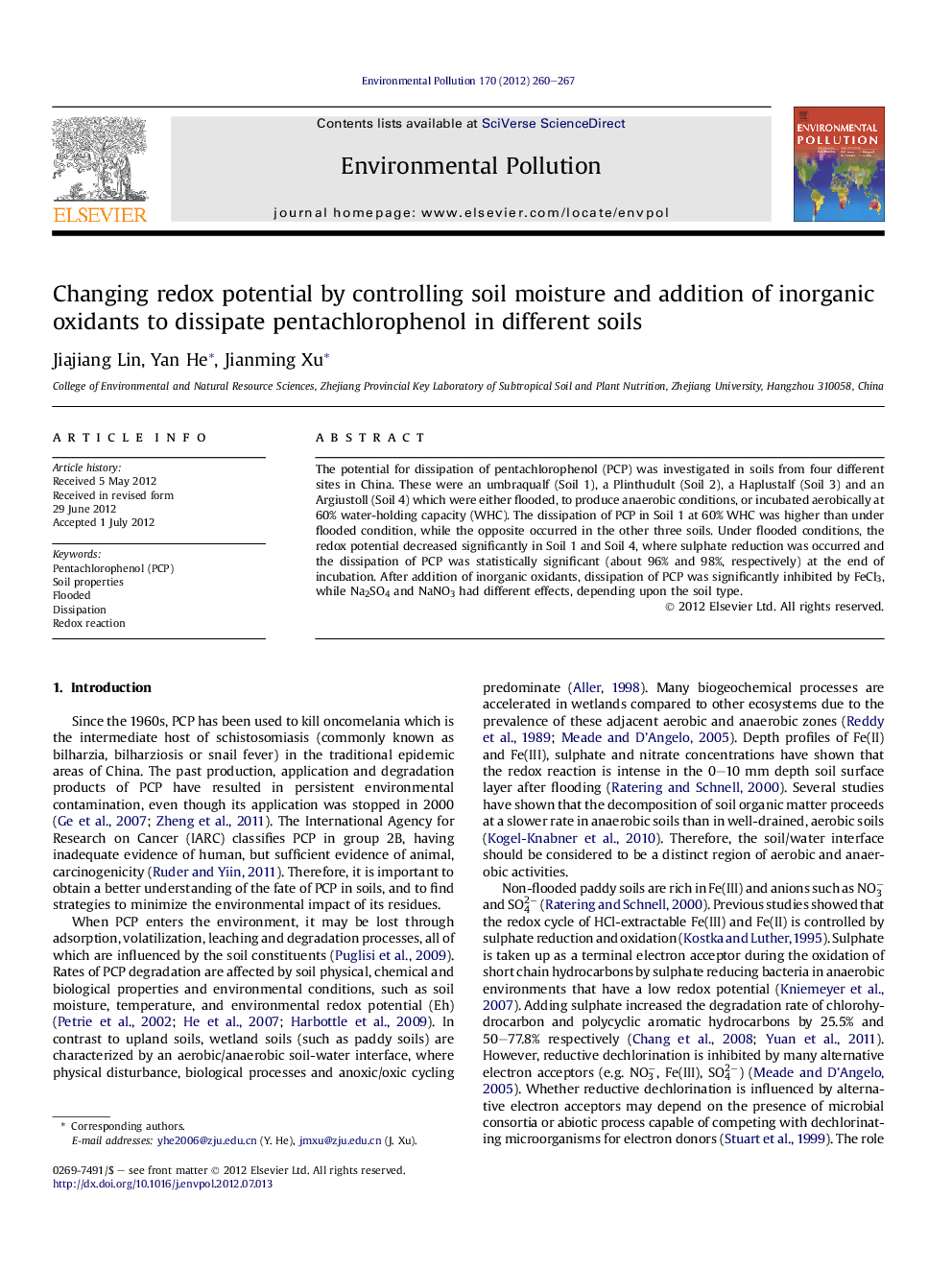| Article ID | Journal | Published Year | Pages | File Type |
|---|---|---|---|---|
| 4424778 | Environmental Pollution | 2012 | 8 Pages |
The potential for dissipation of pentachlorophenol (PCP) was investigated in soils from four different sites in China. These were an umbraqualf (Soil 1), a Plinthudult (Soil 2), a Haplustalf (Soil 3) and an Argiustoll (Soil 4) which were either flooded, to produce anaerobic conditions, or incubated aerobically at 60% water-holding capacity (WHC). The dissipation of PCP in Soil 1 at 60% WHC was higher than under flooded condition, while the opposite occurred in the other three soils. Under flooded conditions, the redox potential decreased significantly in Soil 1 and Soil 4, where sulphate reduction was occurred and the dissipation of PCP was statistically significant (about 96% and 98%, respectively) at the end of incubation. After addition of inorganic oxidants, dissipation of PCP was significantly inhibited by FeCl3, while Na2SO4 and NaNO3 had different effects, depending upon the soil type.
► The extent of the aerobic/anaerobic interface depends upon the soil properties. ► The dissipation of PCP was accelerated in some soils due to the soil-water interface. ► The addition of oxidants inhibited the decrease in soil redox potential. ► Most external oxidants added under flooded condition inhibited PCP dechlorination.
